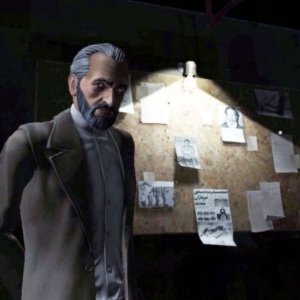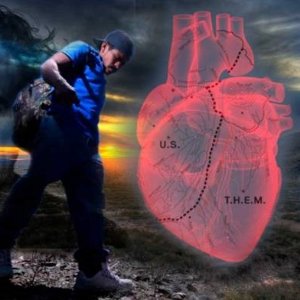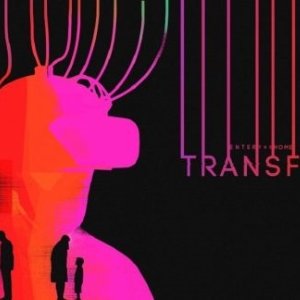 Lately I’ve been doing a bit of VR bingeing. While I’m not a binge TV viewer, I cannot get enough VR when the opportunity presents itself. Luckily, I’m based in Los Angeles, where new media experiments are all the rage, and my job takes me to exactly the kinds of conferences that showcase new experiments in the field.
Lately I’ve been doing a bit of VR bingeing. While I’m not a binge TV viewer, I cannot get enough VR when the opportunity presents itself. Luckily, I’m based in Los Angeles, where new media experiments are all the rage, and my job takes me to exactly the kinds of conferences that showcase new experiments in the field.
As you’ve no doubt heard, VR is all the rage right now, syphoning start-up funding from what many believe are more worthy, though less glitzy, projects. Stanford’s Jeremy Bailenson has just published Experience on Demand, which catalogs the many uses for VR, mostly for training or therapy, and VR pioneer Jaron Lanier has just come out with a surprisingly optimistic book, Dawn of the New Everything. Even if you’re skeptical about VR, I strongly urge you to try it out. And not just what you can pop into your Google Cardboard. Before you completely dismiss it, you need to experience it with better hardware, such as Samsung Gear or, even better, the HTC Vive.
Unfortunately, that’s easier said than done. Even if you get the chance to go to South By Southwest or the Future of Storytelling Festival (I went to both last year), you will soon learn that you’ll be facing long, depressing lines, sometimes hours long, for an experience that will last less than ten minutes — sometimes much less. Welcome to the dark side of experiential storytelling.
However, where there’s a will, there’s a way: ask questions, inquire ahead, and see if you can make reservations. IMAX VR now has 6 locations and counting: I loved Eagle Flight and Raw Data, two exhilarating multiplayer games. And museums and cultural centers offer these experiences, as well, often with a more civilized reservation system in place than conferences offer.
And then sometimes you just get lucky. While strolling through Montreal’s old city, I saw a sign saying “Luxury Rubbish:” anyone who knows me knows I wouldn’t pass that up. Turns out it was the gift shop for a cultural arts center that just happened to be hosting a massive VR exhibition curated by none other than the Future of Storytelling.
Needless to say, I showed up the moment the place opened, on a day the staff recommended as a low-traffic day, and spent half a day in other worlds of many people’s making. Afterwards I knew I must share a guide to these experiences so that unlucky others can figure out which line they should get into at the next SXSW, Sundance, Tribeca or Future of Storytelling Festival.
Instead of offering reviews of quality and preference, my goal here is to give some indication of what new realities these VR pieces explore: are you interested in how VR might transform books, art, dance, games or movies? Then read on, my friend.
 Blind Vaysha, by Theodore Ushev, produced by the NFB
Blind Vaysha, by Theodore Ushev, produced by the NFB
How might we transform literature into VR? In Blind Vaysha, the voice over narration keeps the story experience central but the innovation here is the way in which the vision theme plays out literally on your eyeballs. It’s a terrific convergence of form and content.
Broken Night, by Alon Benari, Tal Zubalsky and Alex Vlack, produced by Eko, Hidden Content and Real Motion, in collaboration with Irving Harvey.
How can we communicate the radical indeterminacy of memory? This is perhaps the only piece of VR I’ve seen that features bona fide Hollywood stars (Emily Mortimer and Alessandro Nivola) – and kudos to them for taking the plunge. The main value of this piece, I believe, is its success conveying the unreliability not only of the traumatized, but of the eyewitness. Which is you.
Dear Angelica, by Saschka Unseld, produced by Oculus Story Studio
There was something incredibly sumptuous about the colorful looping dreaminess of this gorgeous piece featuring the voice of Geena Davis. If you’re interested in graphic novels or comics, I think Dear Angelica is a delicious example of how drawings can come alive in three-dimensional space.
Flock, by David Lobser, produced by Object Normal, with support from NYU/MRL
Flock is a social VR experience, which means that you can interact with other people’s avatars within the VR space. Thankfully, we received some really good advice before starting: instead of focusing on racking up points by pecking bugs (were they bugs?) focus on climbing inside other players’ bird heads. (Yes, you read that correctly.) What ensues is completely psychedelic and, due to extreme physical proximity, puts into question claims about the alienating and anti-social effects of VR.
Life of Us, by Within (Chris Milk and Aaron Koblin), produced by Chris Milk, Megan Ellison (Annapurna Pictures) and Made with Unity
This was, undoubtedly, my favorite experience at Lucid Realities, which probably says more about me than the piece itself. As exhilarating as a roller-coaster ride, this trip through the evolution of the human species left me completely out of breath and dying to go back in. Like Flock, Life of Us is a social experience in which you can both see and hear a friend: I found it hard to stop talking during the experience because your voice evolves as your avatar evolves, from amoeba to space matter.
Fragments, by Asobo Studio and Microsoft Studios Global Publishing
How might Augmented Reality be used for gaming? This is the first time I’ve ever used HoloLens, augmented reality glasses that mapped game animations into my physical space. I love the idea, but it was clear from the outset that seven or eight minutes isn’t enough time to get a feel for the plot, the characters, or the rhythm of game play. Try, if you can, to get some serious time with Fragments so that you actually have time to piece them together.
Home: Immersive Spacewalk Experience, by Tom Burton, produced by BBC Studios and Rewind
What does it feel like to be in outer space? I had sweat rings after this experience, which tasked me with making a repair on the outside of a space station and finding my way back into the station afterwards. Needless to say, I panicked and died, which I heard was the fate of most. The seeming artificiality of the environment in outer space maps beautifully onto the artificiality of the VR experience, which is one reason I think Home had one of the longest wait lists at Lucid Realities.
The Island of the Colorblind, by Sanne De Wilde, produced by IDFA and Brakke Grond
 I wouldn’t call this a virtual reality experience, but a fascinating experiential art installation that I’d recommend to anyone interested in the science of color or the possibilities of place-based, interactive storytelling. Like Blind Vaysha, one reason this works so well is because the story itself is about the nature of vision. Watch your eyes trick you.
I wouldn’t call this a virtual reality experience, but a fascinating experiential art installation that I’d recommend to anyone interested in the science of color or the possibilities of place-based, interactive storytelling. Like Blind Vaysha, one reason this works so well is because the story itself is about the nature of vision. Watch your eyes trick you.
RIOT (prototype), by Karen Palmer, in partnership with The National Theatre Immersive Storytelling Studio and Brunel University London
 What happens when your facial expressions control the experience? I first heard about RIOT at SXSW but I had to wait several months before I had a chance to try it out in Montreal. Instead of choosing options from a menu, the application uses facial recognition technology to determine how you would react during a riot. I left this one wishing I could do it again with different expressions.
What happens when your facial expressions control the experience? I first heard about RIOT at SXSW but I had to wait several months before I had a chance to try it out in Montreal. Instead of choosing options from a menu, the application uses facial recognition technology to determine how you would react during a riot. I left this one wishing I could do it again with different expressions.
While this may seem too sci fi to be true, get used to it: immersive storytellers will inevitably adopt tools like these. Distracting hand controls will be a thing of the past.
Blindfold, made in partnership with the Committee to Protect Journalists and The Center for Human Rights in Iran.
 How would you respond to a violent interrogation? This sinister experience puts you in the shoes of an investigative journalist; your answers determine the fate of your brutally beaten friend who sits right in front of you. The experience is made more compelling by your ability to respond to the interrogator’s questions by nodding or shaking your head. Like RIOT, Blindfold allows us to imagine what it will be like to have a more embodied entertainment experience: in this one, the feeling of being seen by this ruthless interrogator is chilling.
How would you respond to a violent interrogation? This sinister experience puts you in the shoes of an investigative journalist; your answers determine the fate of your brutally beaten friend who sits right in front of you. The experience is made more compelling by your ability to respond to the interrogator’s questions by nodding or shaking your head. Like RIOT, Blindfold allows us to imagine what it will be like to have a more embodied entertainment experience: in this one, the feeling of being seen by this ruthless interrogator is chilling.
Tilt Brush, by Google
How might we turn gestures into art? I used this truly delightful application in a friend’s house. If you get any pleasure out of pure color and giddily dancing around, then this is a must for you, too.
CARNE y ARENA (Virtually present, Physically invisible), by Alejandro G. Iñárritu, Emmanuel Lubezki, Mary Parent and ILMxLAB
 By far the grandest VR experience I’ve ever had, Alejandro Inarittu’s large-scale Carne y Arena is a multi-room experience intended to give you the chance to walk in the shoes of immigrants crossing the Sonoran desert. A giant room filled with sand and a powerful wind machine help conjure the physical experience in a way that approaches participatory theater. After the VR experience ends, you enter a room filled with the true stories of the people you encountered, further blurring the line between virtual and real. No wonder it won a special Oscar.
By far the grandest VR experience I’ve ever had, Alejandro Inarittu’s large-scale Carne y Arena is a multi-room experience intended to give you the chance to walk in the shoes of immigrants crossing the Sonoran desert. A giant room filled with sand and a powerful wind machine help conjure the physical experience in a way that approaches participatory theater. After the VR experience ends, you enter a room filled with the true stories of the people you encountered, further blurring the line between virtual and real. No wonder it won a special Oscar.
Through You, by Saschka Unseld and Lily Baldwin
How might a dance performance be captured in VR? This live-action love story focuses on a pair of dancers, which reminded me repeatedly of Wim Wenders’ Pina, a poetic 3-D documentary film about the influential dancer/choreographer, Pina Bausch. Both experiences were simultaneously exhilarating and heartbreaking. Through You offers the additional advantage of giving us a peek at how VR can be used for pornography. Given the option, I’m not sure who would choose 2D over VR.
Transference™, by Ubisoft and SpectreVision
 What would an interactive movie feel like? I heard a couple people yelp before I tried out this experience, which involves (spoiler alert) a very scary guy with a gun in the basement. Making your way through this grim scenario requires patience and problem-solving. Only a sample was available at Lucid Realities, but the entire experience includes multi-branching narratives in which players can affect the fates of characters.
What would an interactive movie feel like? I heard a couple people yelp before I tried out this experience, which involves (spoiler alert) a very scary guy with a gun in the basement. Making your way through this grim scenario requires patience and problem-solving. Only a sample was available at Lucid Realities, but the entire experience includes multi-branching narratives in which players can affect the fates of characters.
Tree, by Milica Zec and Winslow Porter of New Reality Company, in partnership with Here be Dragons and Droga5
How might VR be used to increase empathy? When the goggles and the backpack came off, people were occasionally in tears. It’s hard to explain how emotionally moving this experience can be, since becoming a tree in a rainforest doesn’t exactly suggest epic drama, or even much movement, per se. But there is something magical about growing tall as the tree, and feeling your arms transform into limbs that you can shake and sway and use to shoo away exotic creatures. But the kicker for me (spoiler alert!) was the intoxicating aroma: it turns out that the backpack is loaded with timed scent diffusers, which tackled my primordial brain and took me there like nothing else could. If complete immersion is the endgame of entertainment, this VR experiment takes us closer to it.
Got some VR you’d like to recommend? Please send your favorites my way via enter@usc.edu.
